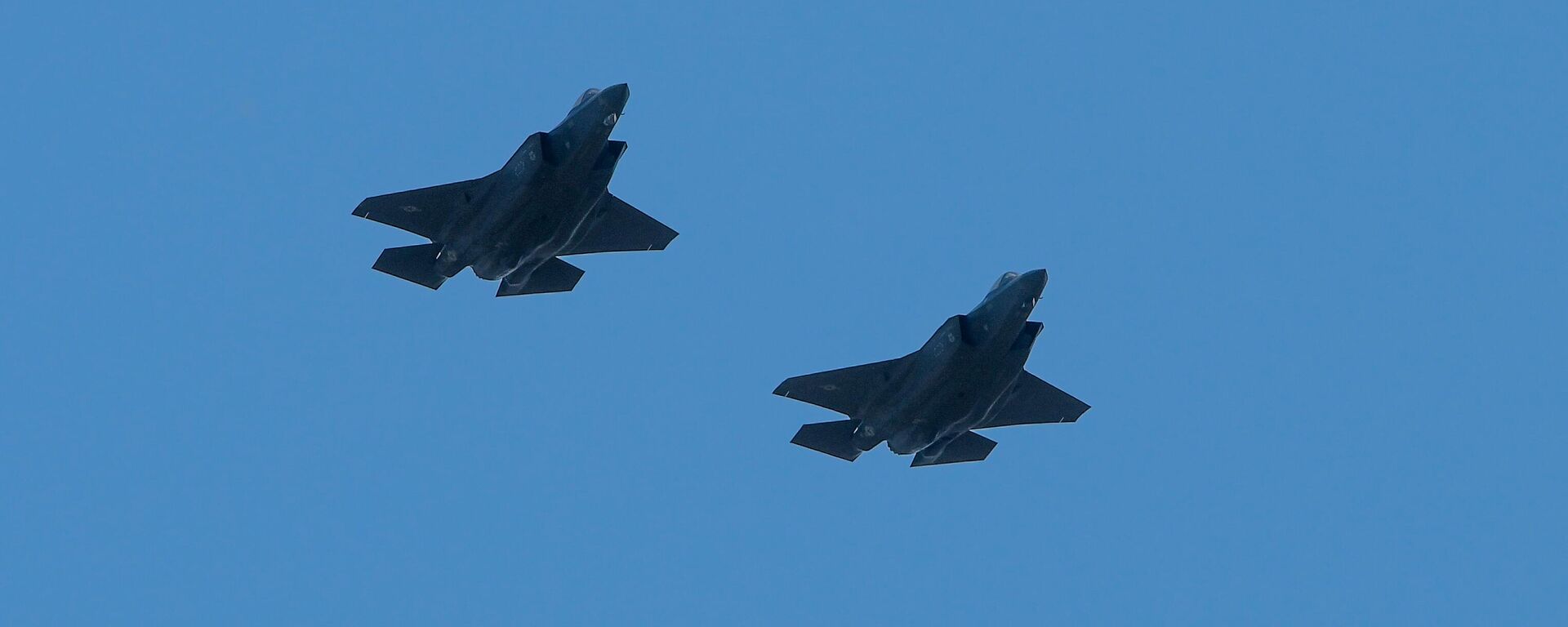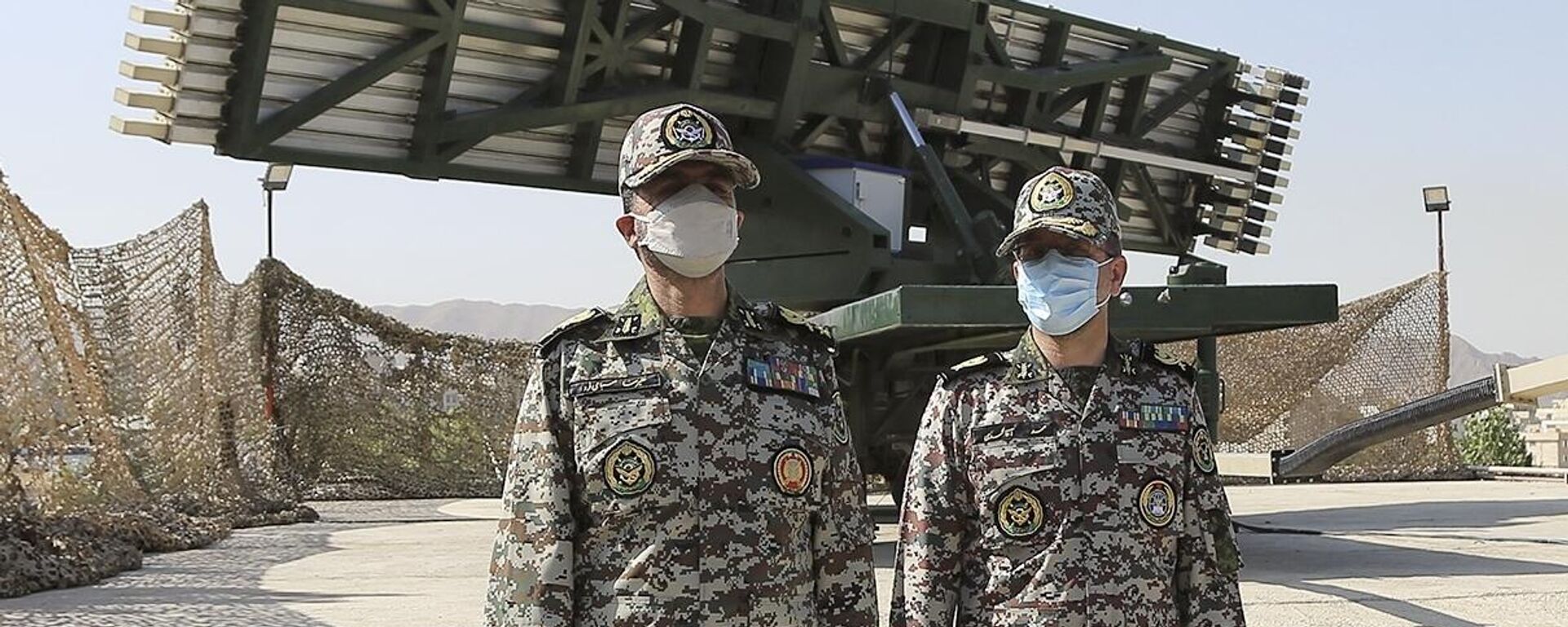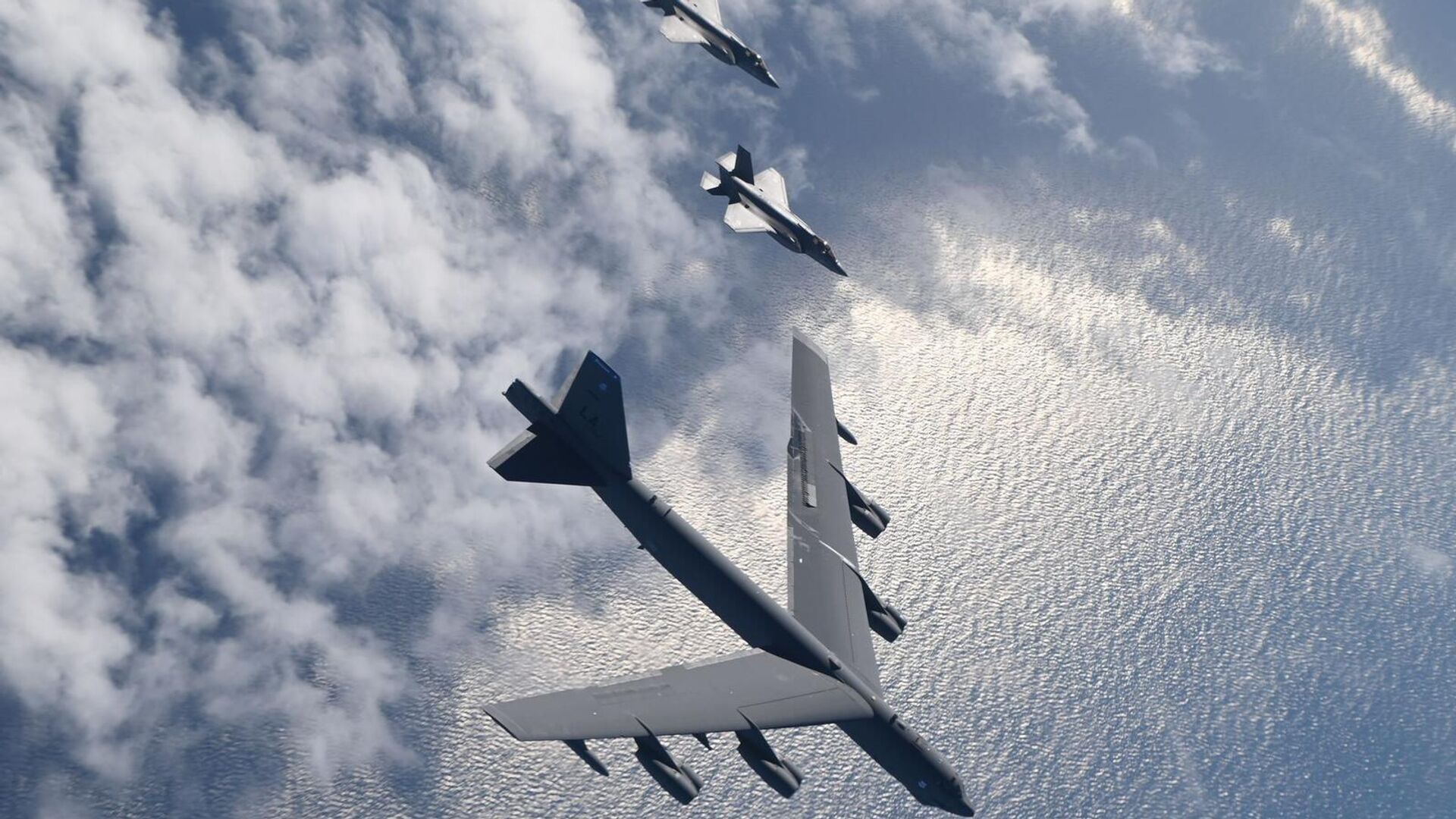https://sputnikglobe.com/20230427/iran-can-now-track-unique-radar-signature-of-individual-f-35-jets-1109893497.html
Iran Can Now Track Unique Radar Signature of Individual F-35 Jets
Iran Can Now Track Unique Radar Signature of Individual F-35 Jets
Sputnik International
Burdened by decades of Western restrictions on arms imports in the wake of the 1979 Revolution, the Islamic Republic has created a powerful homegrown defense sector, ranging from radar and missile systems to satellites and defense electronics.
2023-04-27T16:56+0000
2023-04-27T16:56+0000
2023-04-27T18:08+0000
military
f-35
radar
radar station
iran
israel
us
signature
https://cdn1.img.sputnikglobe.com/img/07e6/0b/0a/1103994043_0:86:1601:986_1920x0_80_0_0_a94462a348e97624e8819b6dc7ae2bb6.jpg
Iranian engineers have created technologies capable of detecting the “fingerprints” of enemy equipment – including the radar signature identifying individual Lockheed Martin F-35 fighter jets, Iran Electronics Industries (IEI) chief Brig. Gen. Amir Rastegari has revealed."We have the fingerprints of the enemy’s electronic equipment. Just as fingerprints are unique to humans, this is also the case in regard to electromagnetic systems, and we have achieved the technology [to detect them] for several years," the official said in an interview with local media.This capability to monitor "all dimensions" of the electromagnetic waves projected by enemy aircraft allows Iran to plan its defensive operations accordingly, the official said.Iran has also gained the ability to bombard the radar and communications systems of enemy aircraft with radio waves to disrupt their operations, and has successfully tested its systems out against real-world adversaries, Rastegari said.Rastegari, a veteran of fierce skirmishes between Iranian and US forces operating in the Persian Gulf during the Iran-Iraq War, recalled that as a young officer on board an Iranian warship which engaged the powerful US 5th Fleet, he had to observe with "bitterness" how Iran’s military was forced to rely on WWII-era flak cannons to engage American A-6 Intruder jet aircraft, allowing the US planes to effectively act with impunity.The official characterized the current era as the era of a "sixth generation" of warfare consisting of hybrid and network-oriented war, smart weapons, unmanned weapons systems and artificial intelligence. To remain a step ahead of the enemy, Iran’s radar and electronic warfare systems must be able to see the enemy before they see Iran, he stressed.Iran is already engaged in an "electronic war" against its adversaries, Rastegari noted, with enemies testing the nation’s airspace defenses on a regular basis. Iran’s air and border defense forces are also forced to engage in a constant battle against micro-drones, with the military using electronic warfare tools to bring them down before they can reach their targets.Iran Electronic Industries (IEI) is a state-owned company and is the largest electronics company in the Islamic Republic. Its products have provided the Middle Eastern nation with a panoply of homegrown equipment ranging from radar and electro-optics to electronic warfare systems and encrypted telecommunications, satellites, sonar and network-based warfare systems. The defense electronics sector has also shared some of its know-how with the civilian economy, helping Iran to solve problems stemming from Western sanctions.
https://sputnikglobe.com/20230222/us-navy-blames-rookie-pilot-for-disastrous-f-35-crash-that-saw-jet-plummet-into-south-china-sea-1107684556.html
https://sputnikglobe.com/20220117/any-airborne-object-can-be-detected-tracked-dealt-with-iran-boasts-of-power-of-indigenous-radar-1092322134.html
https://sputnikglobe.com/20230420/iranian-navy-forced-us-nuclear-submarine-to-surface-change-track-in-hormuz-strait-1109700784.html
iran
israel
Sputnik International
feedback@sputniknews.com
+74956456601
MIA „Rossiya Segodnya“
2023
News
en_EN
Sputnik International
feedback@sputniknews.com
+74956456601
MIA „Rossiya Segodnya“
Sputnik International
feedback@sputniknews.com
+74956456601
MIA „Rossiya Segodnya“
iran, islamic republic of iran, radar, f-35, lockheed martin, united states, us, israel, jet, tracking
iran, islamic republic of iran, radar, f-35, lockheed martin, united states, us, israel, jet, tracking
Iran Can Now Track Unique Radar Signature of Individual F-35 Jets
16:56 GMT 27.04.2023 (Updated: 18:08 GMT 27.04.2023) Burdened by decades of Western restrictions on arms imports in the wake of the 1979 revolution, the Islamic Republic has created a powerful homegrown defense sector, ranging from radar and missile systems to satellites and defense electronics.
Iranian engineers have created technologies capable of detecting the “fingerprints” of enemy equipment – including the radar signature identifying individual Lockheed Martin F-35 fighter jets, Iran Electronics Industries (IEI) chief Brig. Gen. Amir Rastegari has revealed.
"We have the fingerprints of the enemy’s electronic equipment. Just as fingerprints are unique to humans, this is also the case in regard to electromagnetic systems, and we have achieved the technology [to detect them] for several years," the official
said in an interview with local media.
"For example, if the radar of an F-35 fighter begins operations and surveillance, it emits radar waves which are different from those of another’s F-35’s radar waves. Today, we are capable of recognizing them, that is, we can receive and analyze the telecommunication, radio and magnetic signals and find out the warplane they belong to. If the same fighter jet starts operating later, we will immediately find out about it," Rastegari explained.
This capability to monitor "all dimensions" of the electromagnetic waves projected by enemy aircraft allows Iran to plan its defensive operations accordingly, the official said.

22 February 2023, 04:15 GMT
Iran has also gained the ability to bombard the radar and communications systems of enemy aircraft with radio waves to disrupt their operations, and has successfully tested its systems out against real-world adversaries, Rastegari said.
"Some time ago, an enemy aircraft approached to within our airspace boundaries and began emitting radar waves to collect information. We jammed this aircraft, but the enemy pilot thought his system was malfunctioning and called back to base, saying ‘my systems have encountered a problem, I will return.’ We have records of this exchange. The next day, two more enemy planes approached…This time we disrupted both of them," the official noted. "As soon as we began to disrupt them, the two planes realized that our ground systems were jamming them, so they radioed to base that a 'jammer is operating here and we can no longer operate.' This capability exists in our Armed Forces today. We can disrupt [the enemy] if we see a threat at distances of several hundred kilometers away."
Rastegari, a veteran of fierce skirmishes between Iranian and US forces operating in the Persian Gulf during the Iran-Iraq War, recalled that as a young officer on board an Iranian warship which engaged the powerful US 5th Fleet, he had to observe with "bitterness" how Iran’s military was forced to rely on WWII-era flak cannons to engage American A-6 Intruder jet aircraft, allowing the US planes to effectively act with impunity.
“But that is not the case today,” the brigadier general emphasized, pointing to dramatic advances in radar and missile technology which allowed Iran’s defenses to down a stealthy US Global Hawk spy drone in 2019 after it intruded into Iranian airspace over the Strait of Hormuz with a single shot.

17 January 2022, 14:11 GMT
The official characterized the current era as the era of a "sixth generation" of warfare consisting of hybrid and network-oriented war, smart weapons, unmanned weapons systems and artificial intelligence. To remain a step ahead of the enemy, Iran’s radar and electronic warfare systems must be able to see the enemy before they see Iran, he stressed.
Iran is already engaged in an "electronic war" against its adversaries, Rastegari noted, with enemies testing the nation’s airspace defenses on a regular basis. Iran’s air and border defense forces are also forced to engage in a constant battle against micro-drones, with the military using electronic warfare tools to bring them down before they can reach their targets.
Iran Electronic Industries (IEI) is a state-owned company and is the largest electronics company in the Islamic Republic. Its products have provided the Middle Eastern nation with a panoply of homegrown equipment ranging from radar and electro-optics to electronic warfare systems and encrypted telecommunications, satellites, sonar and network-based warfare systems. The defense electronics sector has also shared some of its know-how with the civilian economy, helping Iran to solve problems stemming from Western sanctions.





